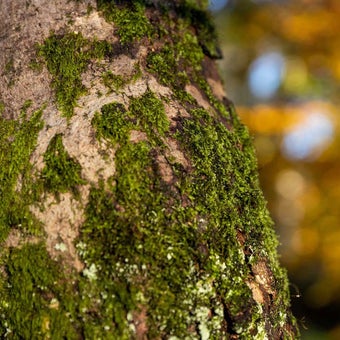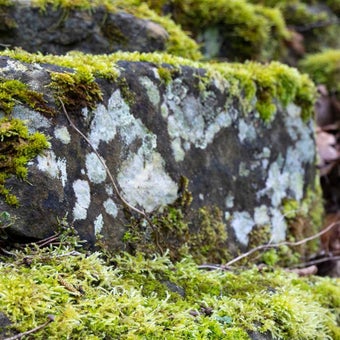
Quick facts
Over 700 species of moss grow in the UK. Habitat loss and climate change have put some of these at risk
Mosses provide habitats and food for many ground-active invertebrates
In evolutionary terms, mosses are very old, and like other early plants they reproduce by spores rather than seed
If you choose to control moss in your lawn, non-chemical methods are easy and effective
There are no products to kill moss permanently
Types of moss found in lawns
Many moss species grow particularly well in shady, damp conditions on compacted, acidic soil. Some require very specific growing conditions to survive, but many will tolerate a wide range of conditions.
Some mosses you might find in your lawn include rough-stalked feather-moss (Brachythecium rutabulum), springy turf-moss (Rhytidiadelphus squarrosus), pointed spear-moss (Calliergonella cuspidata) and haircap mosses (Polytrichum spp.). Identifying which type of moss you have isn’t essential, but if you are interested in learning about mosses, the British Bryological Society is a good source of information.
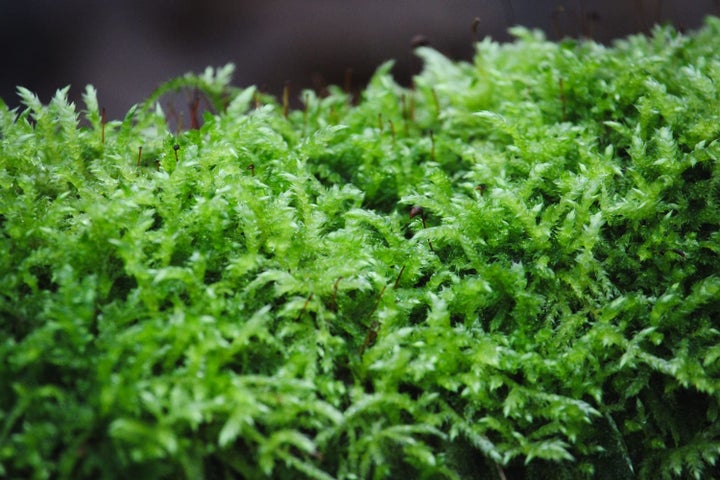
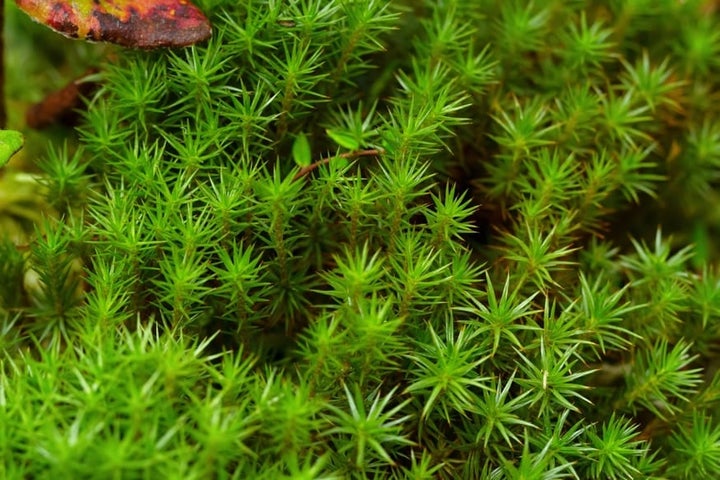
Is moss a problem?
Moss in a lawn isn’t necessarily a problem – it is soft, green, low-growing, low maintenance and can be walked on. In damp or shady growing conditions where lawn grasses struggle, allowing moss to grow is a sensible option. Moss is widely used in Japanese gardens to create beautiful, velvety green carpets, and as perceptions of lawns are changing and climate change is making it more difficult to maintain a green, single-species lawn, many UK gardeners are now embracing the benefits of moss, alongside or instead of lawn grasses. Other uses for moss can be found on our magic of moss page.
A species-rich lawn containing moss creates a valuable habitat for small creatures, including beetles and woodlice, and even smaller microscopic invertebrates such as rotifers, tardigrades and nematodes. Moss is a food source for the caterpillars of many moths, and birds use moss from lawns as nesting material.
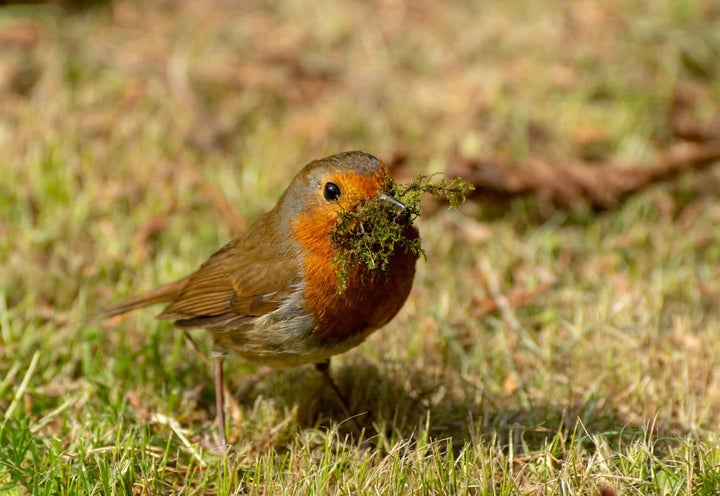
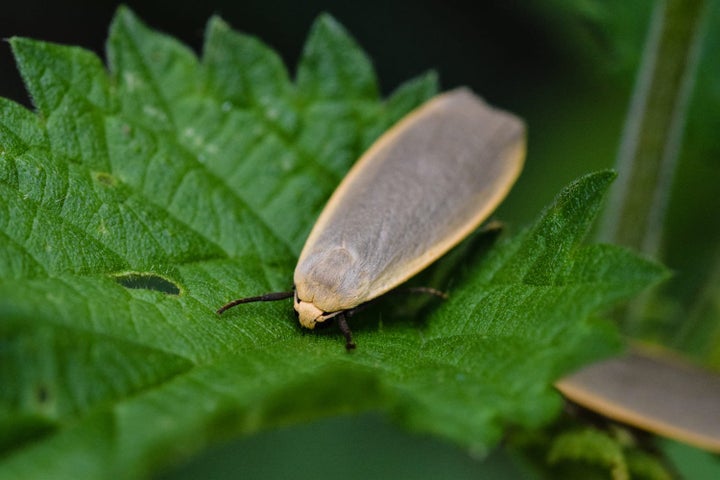
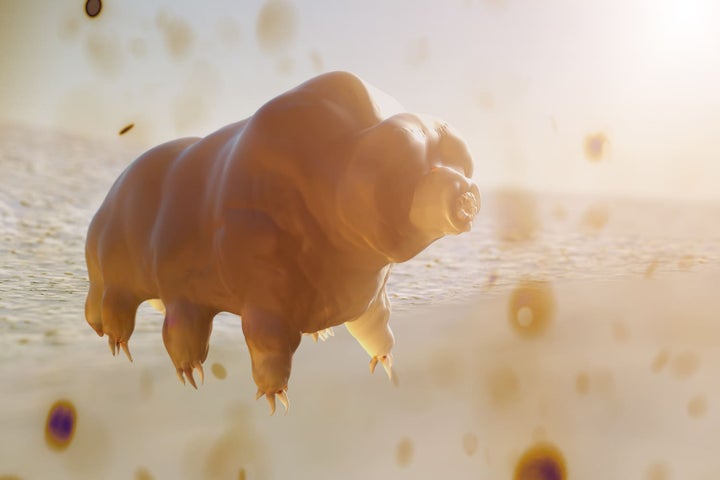
However, moss isn’t always welcome; gardeners wanting fine turf or a domestic lawn containing only lawn grass species will likely view moss as a weed. Moss can give fine turf an uneven colour and surface, and loose moss can make a lawn feel spongy under foot.
What is a weed?
The term ‘weed’ describes a plant that is growing where it isn’t wanted. Weeds usually thrive in average garden conditions, reproducing and spreading easily. It is up to you to decide what you call a weed and what you choose to retain or remove.
What causes moss in lawns?
Moss is sometimes temporary, perhaps caused by an exceptionally wet winter, but it tends to be more persistent. Common causes for excess moss in lawns are:
- Sparse, weak or patchy grass – this could be due to drought stress, shade or mowing too low
- Worn, bare areas of turf – such as where children play or where grass is regularly walked on
- Compacted soil and/or poor soil preparation before the lawn was laid or sown
- A damp climate and/or waterlogged conditions
- Acidic soil – many mosses prefer soil with a low pH level
Frequently asked questions about controlling moss in lawns
Here are our answers to your most common questions about dealing with moss in lawns:
How invasive is moss?
Mosses are a successful group of plants; they evolved long before flowering plants, occur on every continent, and have adapted to conditions where many other plants would struggle to survive. Despite their longevity and success, it is difficult to view mosses as due to their slow growth and lack of true roots (they have shallow rhizoids that anchor them to a surface).
Even in ideal growing conditions, moss spreads slowly. The lack of a deep or spreading root system makes removal easy, but if growing conditions stay the same, moss is very likely to return. Sections of moss can re-establish after being disturbed. Mosses reproduce by tiny airborne spores; these can travel many miles and will germinate if they land in favourable (damp) conditions.
Do I need to get rid of moss from my lawn?
No – if your growing conditions are more suited to moss than lawn grasses, it makes sense to leave the moss to provide soft, low, evergreen ground cover that you can walk on and don’t need to mow.
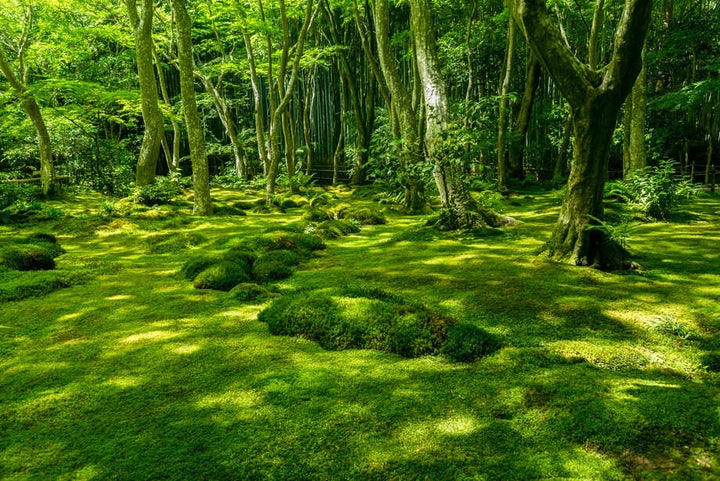
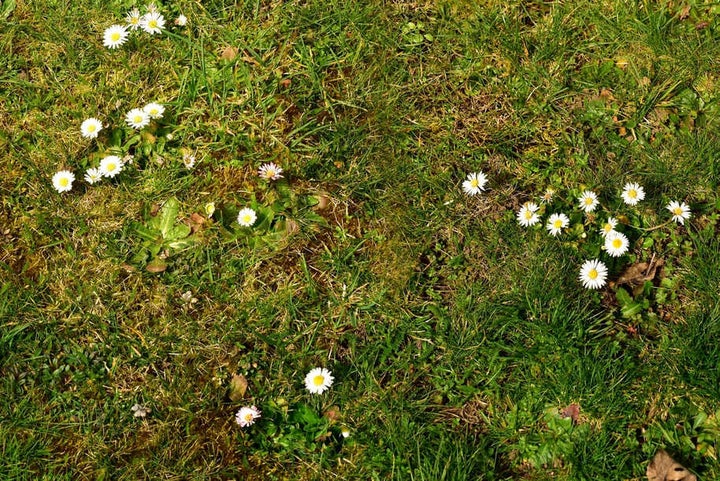
If you prefer a lawn containing only lawn grasses, you’ll probably want to get rid of moss. This does reduce biodiversity in your garden.
Top Tip
Rather than battle against moss, save time, money and resources by embracing it. If moss is thriving in your lawn, allow it to spread and outcompete the grass. Mosses create a calming, soft, evergreen layer, and are becoming increasingly popular as an alternative to a grass lawn.
What is the easiest way to kill moss in lawns?
If you decide you don’t want moss in your lawn, there are ways to remove it and actions you can take to prevent its return:
How to get rid of moss from a lawn:
- Scarify your lawn – ideally in October or early November when the grass is growing strongly, to remove moss. On a small lawn, or if the moss is only in a limited area, this can be done with a spring-tined rake. For a larger area, you could hire a mechanical scarifier. See our page on autumn lawn care for more information.
- Use a bacteria-based moss remover – apply a product, such as Viano MO Bacter Organic Lawn Fertiliser and Moss Remover to remove moss naturally. The bacteria digests moss, so you don’t have to rake out unsightly, dead moss. It doesn’t remove it entirely, but usually makes a noticeable difference.
How to prevent moss growing in a lawn:
- Improve the health of your lawn – follow a programme of lawn maintenance in spring/summer and autumn to boost the vigour of your lawn. Moss is more likely to take hold in a lawn that has sparse or weak grass growth. If your lawn is in shade, choose a shade-tolerant grass mix, available as both seed and turf.
- Adjust the growing conditions – it may be feasible to change growing conditions to favour lawn grasses and deter moss. Pruning nearby trees or shrubs can reduce shade. and top dressing your lawn (see our guide to autumn lawn care) will relieve compaction and improve drainage. In some situations, installing drainage will help, but bear in mind this is a major task and finding somewhere suitable for surplus water to be diverted to can be challenging.
- Check the cutting height of your mower – avoid cutting the grass too short. See our guide to mowing, which includes suggested cutting heights.
- Remove the lawn – consider replacing an area of shady or damp lawn containing moss with plants better suited to the growing conditions, such as shade-loving ground cover plants. Alternatively, if moss is thriving, embrace it and allow it to spread and outcompete the grass. Artificial turf isn’t an effective or sustainable option, as moss can establish in this too.
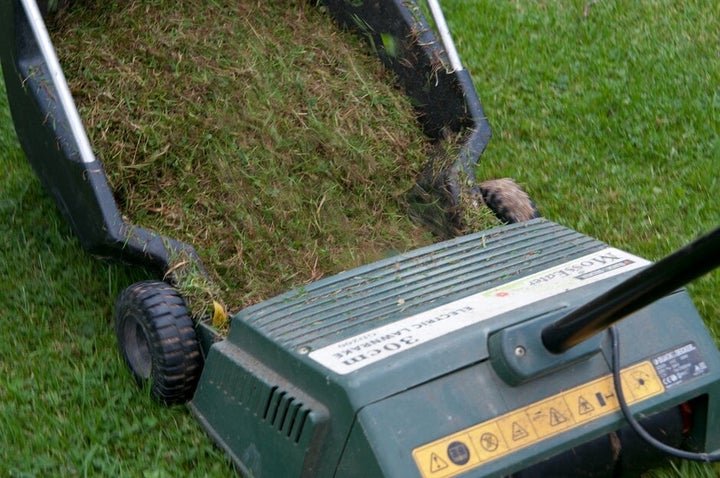
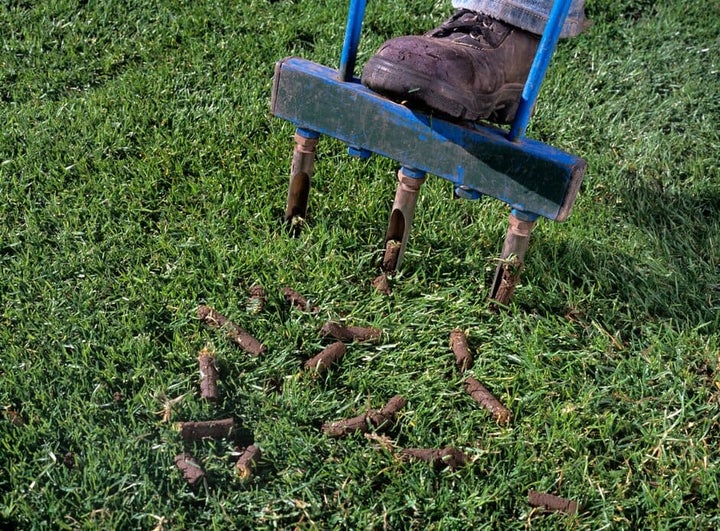
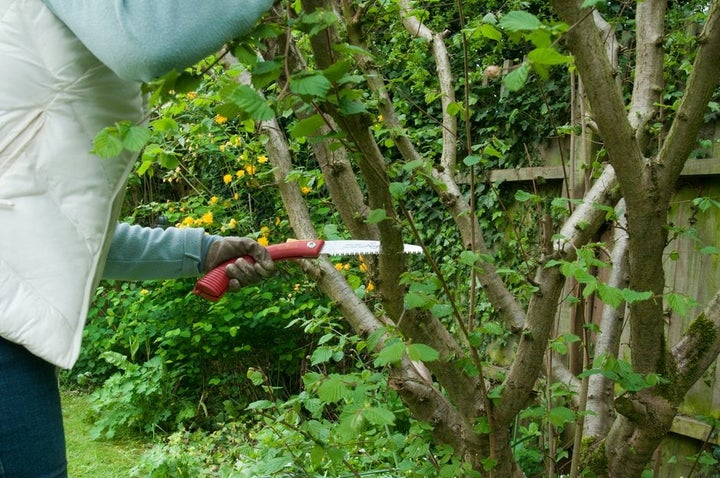
Can I compost or reuse moss?
Moss raked out of lawns can be added to your compost heap. It is slow to rot down in large quantities, so mix it with other ingredients. As moss is very widespread, any spores that survive the process won’t add significantly to the risk of moss forming in your garden. You can also add it to wildlife habitats, bug hotels, or leave some in spring for birds to add to their nests.
Fresh moss has many uses too – consider using it in flower arrangements or to line hanging baskets, adding it to a terrarium or dressing the in containers of spring .
Did you know?
Throughout history, various types of moss have been used to dress wounds. Their absorbancy and antiseptic properties aid healing.
Should I use a synthetic chemical mosskiller?
No, as non-chemical methods are effective at removing moss, there is no need to use a synthetic mosskiller. Also, bear in mind that control with a mosskiller will only be temporary unless the conditions that allowed the moss to become established are changed.
Many synthetic mosskillers contain iron sulphate and although it effectively kills the existing moss, the black, dead moss then needs to be raked up and removed from the lawn.
Did you know?
Iron sulphate (ferrous sulphate) is widely sold as a lawn fertiliser, but unless it is a constituent of a proprietary, HSE (Health and Safety Executive) approved lawn mosskiller it should not be used to control moss in lawns. Proprietary lawn mosskillers have instructions on timings, methods and rates of application, to ensure moss is effectively killed without damaging grass.
Can I use other household products to kill moss?
Killing moss with baking soda, vinegar, bleach, soap and other household products are frequently mentioned on the internet, but they should not be used to kill moss. They can kill grass and act as broad-spectrum insecticides, and are not HSE approved lawn mosskillers.



